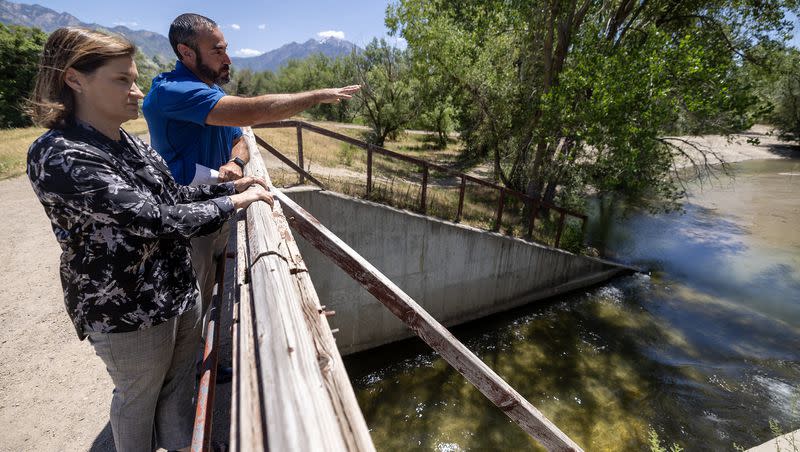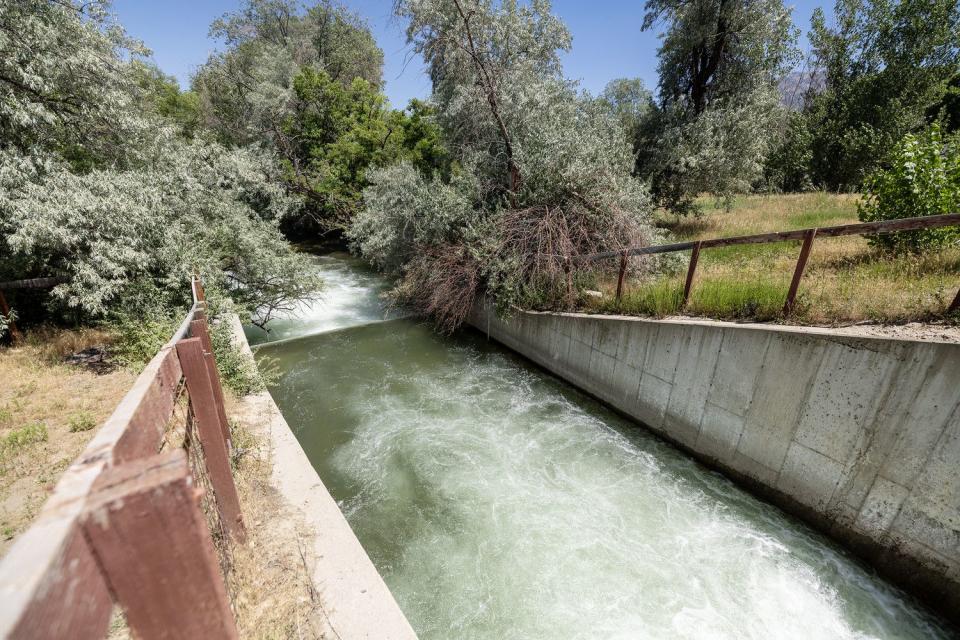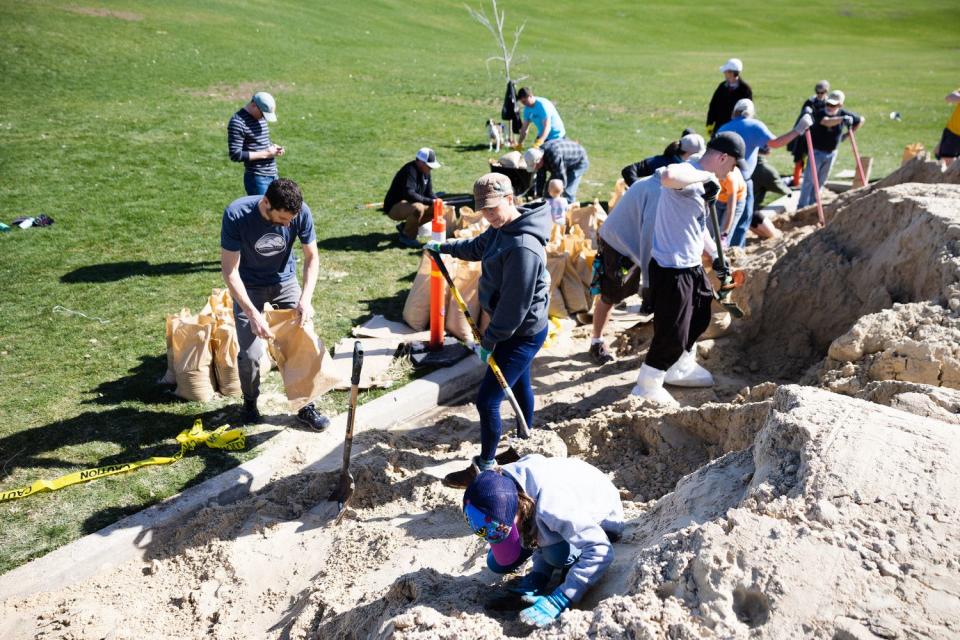How Salt Lake County avoided severe flooding from Utah's record snowpack

- Oops!Something went wrong.Please try again later.
Salt Lake County Mayor Jenny Wilson contends that the county was prepared for this year's spring snowmelt because of lessons learned from earthquakes, wildfires, windstorms and a pandemic over the last few years, on top of severe flooding that ravaged the region 40 years ago.
"All those challenges helped Salt Lake County better prepare," she said during a hot and breezy Monday afternoon at Wheeler Historic Farm. "We were very lucky with the weather but ... we learned from 1983."
Wilson came to the park, which has served as the county's flood control center since late May, to announce the end of the county's flood emergency declaration following a "long four months" of planning and work. In this case, a mixture of preparation and "luck" helped the county avoid adding severe flooding to the list of recent natural disasters and public emergencies.
This year's flood cost the county a little more than $4 million, which isn't terrible all things considered. The mayor pointed out that it's a "dramatic difference" from 1983, which caused more than $1 billion in statewide damage when adjusting for inflation.
She added that the county avoided severe flooding this time around because of a few things that all came together.
Early planning pays off
Salt Lake County was already better prepared because of a year like 1983.
Several flood mitigation projects were created because of flooding in the early 1980s, which experts had pointed to before this year's snowmelt. These include Little Dell Reservoir in Parleys Canyon, debris grates in City Creek Canyon, larger water pipe systems in the county and detention basins throughout other parts of the county, such as the ones in Sugar House Park and Wheeler Historic Farm.

But other tactics were used as the snow kept falling this winter and spring, helping the Provo-Utah Lake-Jordan snowpack basin, which includes Salt Lake County, reach 40.1 inches of snow water equivalent, 5.7 inches above any other period since the early 1980s. The region's snowpack topped out at 34.4 inches of water in 1983.
Several water managers across northern Utah began releasing water from reservoirs before the snowmelt in areas where there wasn't enough capacity to handle the incoming water. Salt Lake County officials say they also coordinated with the cities most at risk for flooding, purchasing equipment and hiring more contractors to help staff members clear debris out of waterways to prevent as many buildups as possible.
"There was a lot of effort to get a lot of the woody debris out of the creeks," said Salt Lake County flood control director Kade Moncur. "I think, even with the favorable weather, we were able to avoid some of the problems we would have seen if there were that much debris in the creeks."

That's not to say there weren't blips along the way. A piece of metal clogged an Emigration Creek culvert in Salt Lake City in April, leading to flooding and voluntary evacuations of about 40 homes. That ended up being one of the worst snowmelt runoff flooding events this year.
Wilson had ordered a state of emergency after the incident. She added Monday that an estimated 500,000 sandbags were distributed across the county this year. The county is still in the process of collecting bags that residents don't want to keep.
Mother Nature's helping hand
Utah's reservoir system had fallen to almost 43% by the start of the 2023 water year because of the last few years of drought. While it's not ideal in terms of water supply, Moncur says this provided a sort of "safety net." Many reservoirs, including those in and around Salt Lake County, had space to collect a record snowpack, which may not have been the case if the system was closer to normal.
Then, particularly in May and June, Salt Lake County experienced an unusual weather pattern of warm, but not hot, weather mixed with storms that produced enough cloud cover to reduce solar radiation in the afternoon.
This led to a slower snowmelt than in 1983, another major reason this year's flooding wasn't as bad as 40 years ago.
What happens next?
The county is now switching back to focus more on wildfires as precipitation continues to slow down for the summer. Experts point out that this year's record snowpack helped trees, brush and grass to grow taller, which means there's more fuel to burn should it ignite.
"We know we're getting a late start to the wildfire season due to the moisture, but I fear the fall," Wilson said. "We expect some hot days ahead and I would just remind people to be very cautious."
Moncur adds that while the flooding emergency is now over, creek flows are still stronger and colder than normal, which is why he says people should still keep a close eye on children and pets this summer.
As for future flooding, it's impossible to know what's in store for next winter. Moncur said that the county is looking at dredging all 11 of its detention basins to ensure they have enough space to collect additional water should they need to be used again next spring.
"Going into next season, we're going to have a little bit less leeway as far as water storage available to help hold back some of the water," he said. "We can have flooding in a year where we have average snowpack. It really depends on when the water wants to come down the mountain."

